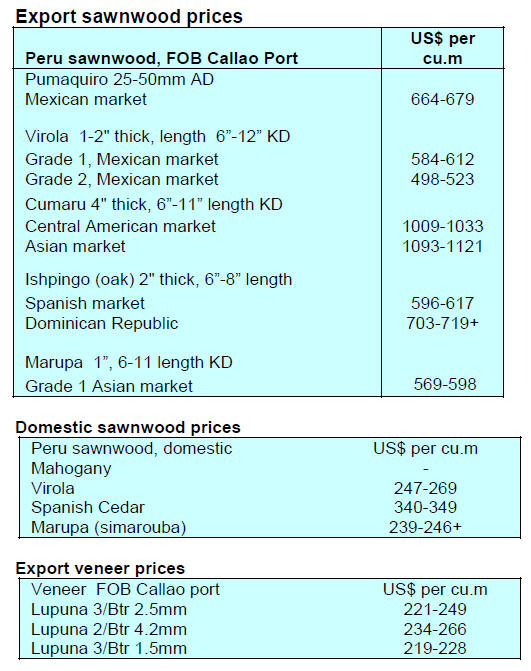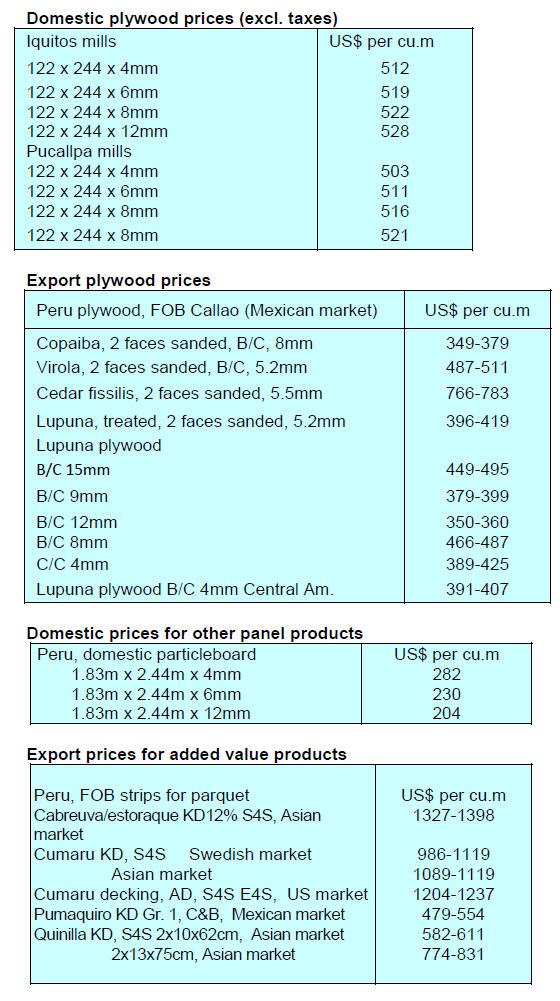4.
INDONESIA
Restrictions to be eased in Jakarta
As of 3 August 2021, the Indonesian Government
announced 3,496,700 confirmed cases of COVID-19 in all
34 provinces of Indonesia, with 524,142 active cases,
98,889 deaths and 2,873,669 people that have recovered
from the illness. Indonesia targets Covid-19 vaccination
for 208.3 million people and has administered the first
dose of vaccines to 23 out of 100 citizens as of 2 August
2021.
See:
https://reliefweb.int/report/indonesia/situation-updateresponse-covid-19-indonesia-3-august-2021-enid
A decision has been made to extend Covid-19 control
measures in Java and Bali but the current plan calls for a
relaxation of restrictions in some areas including Jakarta
where infection rates have slowed. Restrictions in some
areas outside Java and Bali will be extended until 23
August.
Economic recovery moving in right direction
State-owned Enterprises (SOE) Minister, Erick Thohir,
has commented that Indonesia's economic recovery is
moving in the right direction since economic growth
reached 7% in the second quarter of this year.
He argued that this was the result of strong exports,
improving household consumption and investment.
However, the Minister warned everyone must be aware
that the delta variant has a high infection rate and this
represents a considerable risk.
Recovery of exports to US
Indonesia's furniture and craft exports recorded positive
growth especially to the US market rising 35% in the first
half of 2021.
The chairman of the Indonesia's Furniture and Craft
Industry Association's (HIMKI), Abdul Sobur, said during
the first half of 2021exports of furniture and crafts were
valued at US$1.687 billion, a 35% increase year on year.
The main market was the US (50%) followed by Japan
(7%), the Netherlands (5%) Germany (4%), Belgium
(4%), Australia (3.6%) and the UK (3%).
Meanwhile, the Director of Production Forest Business in
the Ministry of Environment and Forestry (KLHK)
reported that exports of forest and wood products in the
first quarter of 2021 increased to US$3.045 billion
compared to the US$2.731 billion in 2020. In the second
quarter of 2021 exports increased 70% year on year.
Plantation and natural forest log production rises
The performance of the forestry and wood processing
sectors in the first and second quarters of 2021 improved
compared to the same periods in 2020. There was an
increase in log production, processed wood production,
NTFP production and export earnings.
Production of logs from both natural forests and plantation
forests in the second quarter of 2020 was 11.56 million
cubic metres and this rose to 12.8 million cubic metres in
the second quarter of 2021. Processed wood production in
the first quarter of 2021 increased by 6% compared to
2020 and in the second quarter it was the same as last year.
To accelerate the growth of the forestry sub-sector the
government implemented several policies including
relaxation of fiscal policy, acceleration of the
implementation of the Job Creation Law and facilitation of
financing for timber legality certification for MSMEs in
forest products and community forest industries.
See:
https://industri.kontan.co.id/news/produksi-kayu-hutanalam-dan-hutan-tanaman-meningkat-620-pada-kuartal-ii-2021
India’s decision on MDF dumping welcomed
Minister of Trade, Muhammad Lutfi, has expressed his
appreciation of the India Government’s decision to reject
the proposed anti-dumping import duty on imports of plain
medium density fibreboard with a thickness of less than 6
mm from Indonesia.
The Indian Directorate General of Trade Remedies
(DGTR) had considered a US$22.47-258.42/cu.m duty on
Indonesian MDF products after it determined that there
were material losses in the Indian MDF Board domestic
industry.
Based on data from the Central Statistics Agency,
Indonesia's MDF exports to India slowed over the past five
years. The highest export of the Indonesian MDF to India
was in 2016 when shipments were worth US$8 million,
this drooped to a little over US$2 million in 2020.
See:
https://www.kemendag.go.id/id/newsroom/pressrelease/ekspor-fibre-board-indonesia-ke-india-bebas-bea-masukanti-dumping-1
Opportunities for greater trade with the UK
Indonesia can intensify trade relations with the UK by
improving the ease of doing business (EODB) and
reducing trade barriers according to the Head of the
Research Center for Indonesian Policy Studies (CIPS),
Felippa Ann Amanta.
In a press release Amanta said that opportunities exist for
better trade relations between Indonesia and the UK
through the Developing Country Trading Scheme (DCTS)
and the Joint Economic and Trade Committee (JETCO)
that was mutually agreed upon.
The Developing Countries Trade Scheme or DCTS
recently launched by the UK after Brexit, boosts the
prospects of Indonesia, which had inked the JETCO with
the UK, to bolster trade between both nations.
Citing the Trade Ministry’s data, Amanta pointed to the
low level of trade between Indonesia and the UK which
was only US$2.2 billion in 2020. Amanta believes that
Indonesia had huge opportunities to export a wide range of
products to the UK.
See:
https://en.antaranews.com/news/180790/improving-eodb-tostrengthen-indonesias-trade-relations-with-uk-cips
Association proposes carbon trading platform
The government has proposed the introduction of a
Carbon Tax through a revision of Law Number 6 of 1983
concerning General Provisions and Tax Procedures (RUU
KUP). It is planned that the minimum rate of tax will be
IDR75.00 per kilogram of carbon dioxide equivalent
(CO2e).
Chairman of the Association of Indonesian Forest
Concessionaires (APHI), Indroyono Soesilo,
recommended that a carbon trading mechanism should be
established so both sellers and buyers can benefit.
See:
https://www.republika.co.id/berita/qxajyc383/aphi-usulkanopsi-pengenaan-pajak-karbon
and
https://nasional.kontan.co.id/news/aphi-perusahaan-yangmencapai-target-penurunan-emisi-selayaknya-diberikan-insentif
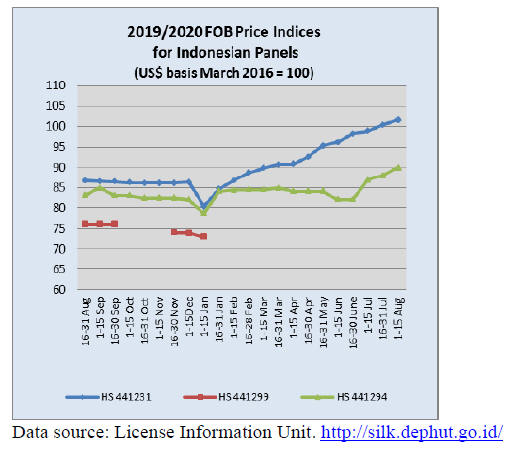
5.
MYANMAR
Exporters facing tough times
Timber exporters are saying buyers in the EU have cut
back on purchases and those that continue to buy wood
products are asking for the names of company
shareholders.
Timber exporters have been facing tough trading
conditions since the February coup. First, the Trade
Department suspended the issuance of export licenses for
about three months from April to June 2021 the when
licenses began to be issued the EU announced sanctions on
the Myanma Timber Enterprise and Forest Joint Venture
Corporation, the official suppliers of teak logs to the
industry.
Myanmar’s political rights and aid crisis is worsening
Speaking to UN News, the organisation’s top aid official
in Myanmar, Acting Humanitarian and Resident
Coordinator Ramanathan Balakrishnan, described how
people have been severely impacted across the country
since the military took control in February.
“The situation in the country is characterised now by
instability and a deteriorating socio-economic and security
situation and to add to that we have a raging third wave of
COVID-19,” said Mr. Balakrishnan.
Highlighting the ongoing nature of armed resistance to
State security forces “in several ethnic minority areas”
including in the states of Shan, Chin and Kachin, the UN
official said that more than 200,000 people had been
uprooted from their homes there to date.
See:
https://news.un.org/en/story/2021/07/1096772
ASEAN envoy confirmed
A decision was taken at the 28th ASEAN Regional Forum
6 August 2021 to appointment of the Minister of Foreign
Affairs II of Brunei Darussalam to be the Special Envoy of
the ASEAN Chair on Myanmar.
The report of the ASEAN Chairman’s Statement reads:
“The Meeting discussed the recent developments in
Myanmar and expressed concern over the situation in the
country, including reports of fatalities and violence. The
Meeting also heard calls for the release of political
detainees including foreigners.
The Meeting welcomed Myanmar’s commitment to the
Five-Point Consensus adopted at the ASEAN Leaders
Meeting on 24 April 2021 and acceptance for the timely
and complete implementation of the Five-Point Consensus
namely, the immediate cessation of violence in Myanmar
and for all parties to exercise utmost restraint; constructive
dialogue among all parties concerned to commence to seek
a peaceful solution in the interests of the people; a Special
Envoy of the ASEAN Chair to facilitate mediation of the
dialogue process, with the assistance of the Secretary-
General of ASEAN; ASEAN to provide humanitarian
assistance through the ASEAN Secretary General and
assisted by the ASEAN Coordinating Centre for
Humanitarian Assistance on disaster management (AHA
Centre) and the Special Envoy and delegation to visit
Myanmar to meet with all parties concerned.
The Meeting welcomed the appointment of the Minister of
Foreign Affairs II of Brunei Darussalam to be the Special
Envoy of the ASEAN Chair on Myanmar, who will start
his work in Myanmar, including building trust and
confidence with full access to all parties concerned and
providing a clear timeline on the implementation of the
Five-Point Consensus before the ASEAN Foreign
Ministers Meeting”.
See:
https://asean.org/wp-content/uploads/2021/08/Final-Chairmans-Statement-of-the-28th-ARF.pdf
However, this appointment was immediately criticised by
Justice for Myanmar who, in a press release, stated the
ASEAN envoy is not acceptable because Brunei’s stateowned
oil company holds gas and oil licenses in the
country.
See:
https://www.justiceformyanmar.org/press-releases/aseansrole-in-myanmar-further-undermined-by-brunei-business-withmilitary-and-cronies
6. INDIA
Record exports
Data from the Ministry of Commerce indicates that Indian
exports have gradually grown after the first wave of the
Covid-19 disrupted global trade. Exports reached a record
high of US$35.2 billion in July this year, the highest
monthly figure in the country’s history. July 2021 exports
increased of 48% compared to July 2020 and by over 30%
compared to pre-pandemic July 2019.
Strong export demand has boosted domestic production
and the economy is showing signs of recovery. The
recovery in manufacturing has resulted in rising demand
for labour which is a welcome development after the
massive job losses during the second wave of the Covid-
19 pandemic.
Plywood price increases
Phenol and formaldehyde prices started to rise at the end
of 2020 and they have continued to surge. Importers say
that the prices have gone up because of increased prices of
benzene and crude oil in international market.
The price increases for raw materials used to manufacture
glues and resins used in the wood based panel sector have
added to the cost of manufacturing plywood and
laminates.
At a recent meeting the All India Plywood Manufacturers
Association decided to raise plywood prices by 6% and
increase the the price of shuttering plywood by Rs. 2 per
square foot.
For more see the June 2021 issue of Ply Reporter.
Imported pine log prices jump
Sharply increased prices for imported pine logs due to firm
international demand and high freight charges have meant
that Indian manufacturers of doors and other products are
having to raise prices. As imported timber prices rise
manufacturers have decided to raise prices for finished
products.
Importers are of the opinion that pine log prices will not
come down for another 4-5 months because of strong
demand in China, USA and Europe.
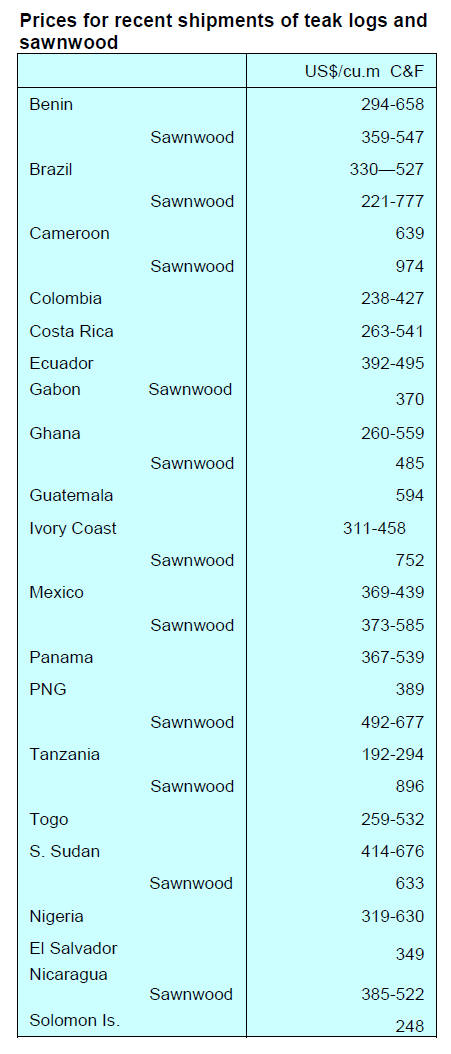

7.
VIETNAM
Shipping delays as port operations slow
Shipping companies are warning that Vietnam will face a
shortage of containers in the coming weeks because of
disrupted schedules for ships returning to Asia, trucking
delays and factory closures. It has been reported that
shippers moving products out of the Cat Lai and Cai Mep
ports in Ho Chi Minh City are seeing delays of two to five
days.
The Cat Lai Terminal is heavily congested and Saigon
New Port Corporation said it has stopped taking in
refrigerated cargoes because of delayed loading. Shipping
companies have suggested exporters ship through ports
such as Tan Cang Hiep Phuoc in HCMC and Tan Cang-
Cai Mep and Tan Cang-Cai Mep Thi Vai in the
neighboring province of Ba Ria-Vung Tau.
See:
https://www.joc.com/port-news/international-ports/shippersface-growing-delays-vietnam-mulls-extending-viruslockdown_20210730.html
and
See:
https://e.vnexpress.net/news/business/companies/hcmc-portstops-receiving-bulk-cargo-amid-container-pileup-4334192.html
Vietnam wood and wood product export and import
update
Exports of wood and wood products in July 2021 reached
US$1.33 billion, up 17% compared to July 2020. In the
first 7 months of 2021 exports of wood and wood products
reached US$9.58 billion, up 55% over the same period in
2020. In particular, exports of manufactured products
reached US$7.45 billion, up 64% over the same period in
2020.
Imports of wood and wood products in July 2021 reached
US$282.7 million up 35% compared to July 2020. In the
first 7 months of 2021 imports of wood and wood products
reached US$1.83 billion, up 40% over the same period in
2020.
Exports to the Japanese market in July 2021 reached
US$128.9 million, up 26% compared to July 2020 and in
the first 7 months of 2021 exports to Japan reached
US$834.7 million, up 19% over the same period in 2020.
Exports of bedroom furniture in July 2021 are estimated at
US$196 million, little changed from July 2020 but in the
first 7 months of 2021exports of bedroom furniture were
around US$1.4 billion, up 47% year on year.
According to preliminary statistics from Customs,
Vietnam's imports of wood raw materials in July 2021
reached 25,900 cu.m, worth US$8.9 million, up 8% in
volume and 3% in value compared to July 2020. In the
first 7 months of 2021 imports of wood raw materials
reached 168,300 cu.m, worth US$ 62.8 million, up 8% in
volume and 6% in value over the same period in 2020.
In the first 6 months of 2021 imports of wood raw
materials from the US reached 374,610 cu.m, worth
US$153.72 million, down 14% in volume but up 2% in
value over the same period in 2020.
Timber enterprises implementing '3 on-site' ask for
public understanding
The South-East of Vietnam, including Binh Duong, Dong
Nai and Ho Chi Minh City together contribute over 70%
of Vietnam’s total value of wood and wood product
exports.
To avoid production disruption during the current
lockdown covering southern Vietnam many wood
processing factories have asked for permission to
implement the model of ‘3-on-site’ which means on-site
production, on-site dining and on-site overnight. They
have also asked for permission to operate a ‘1 road, 2
places’ operations. Both production models aim to avoid
the spread of coronavirus among workers.
For the ‘1 road, 2 places’ arrangement entrepreneurs must
ensure isolated production and residences in two separate
locations, with a single transport route for workers to
commute.
This pandemic production model has been functioning for
a while at small companies (less than 500 workers).
However the system has not been a total success for some
larger companies.
Wood processing enterprises which have been
implementing the ‘3 on-site’ model in the provinces of
Bình Định, Bình Dương and Đồng Nai have detected
clusters of COVID-19 cases but are asking that the
production model be allowed to continue.
The latest survey from the Bình Dương Furniture
Association (BIFA) showed that among 100 wood
enterprises which have been operating the ‘3 on-site’
model, 71 have ensured operations while 29
have been unable to avoid infection clusters.
Similarly, 60% of the 50 companies surveyed in Dồng Nai
Province said they have suspended operations because
their workers have been infected. Another 30% of
companies have been operating in an effort to fulfil
contracts.
The ‘3 on-site’ model, which involves on-site production,
dining and rest has received an enthusiastic response from
workers as it has helped maintain their incomes as well as
support production and the business.
Lê Xuân Tân, Director of Happy Furniture in Đồng Nai
Province, said his company participated in deploying the
‘3 on-site’ model under extremely strict controls from
production to accommodation.
Frequent COVID-19 tests are carried out.
Though admitting ‘3 on-site’ is quite a costly operational
model, Tân said the factory’s closure would impact
production and supply chains and mean workers would
lose their jobs.
See:
https://vietnamnews.vn/economy/999760/wood-enterprisesimplementing-3-on-site-ask-for-less-public-pressure.html
8. BRAZIL
Bank of Amazonia financing SFM
The Bank of Amazonia (BASA) is provided financing for
the implementation and maintenance of sustainable forest
management systems. According to BASA, R$66.9
million was made available in the first half of 2021 to
family farmers who are supported by the National
Program for the Strengthening of Family Agriculture
(PRONAF).
BASA points out that the main purpose of their finacing is
to promote sustainable production of agribusinesses. The
financing aims to guarantee the preservation of the
environment with small properties destined to be included
in the Permanent Preservation Area for reforestation and
agroforestry systems.
BASA considers they contribute to the UN Sustainable
Development Goals for 2030 agenda as they offer an
alternative for the restoration and use of legal reserve
areas.
In order to facilitate access to financing BASA provides a
digital platform which is already accessible in the states of
Pará, Acre, Amazonas, Rondônia, Roraima and Tocantins
states in the Amazon region.
Private preserved forests
Brazil has 498 million hectares of forests of which 98%
are natural forests and 2% are forest plantations. Of the
total area, about 55% are forests on public land and 45%
in private areas. According to Embrapa (Brazilian
Agricultural Research Corporation) out of the forests
located in private areas there are 176.8 million hectares of
natural vegetation which are preserved representing 20.5%
of the Brazilian territory.
The Rural Environmental Registry has 6.95 million rural
properties registered occupying an area of 630 million
hectares according to the Brazilian Forest Service.
Forest reserves and permanent preservation areas (APP’s)
are governed by the 2012 Brazilian Forest Code. The role
of rural producers in protecting natural vegetation is set
out in the legislation.
State of Paraná achieves record furniture exports
The furniture industries in Paraná reached a historic high
export performance in the first half of 2021. Furniture
exports in the first half of 2021 rose 105% in value
compared to the same period last year. According to the
Ministry of Economy exports were destined mainly to
Chile, USA, Argentina, Uruguay and Peru. The challenge
now is to sustain this level of exports.
The biggest surprise was that industries in Paraná state
could achieve this as they never featured prominently in
furniture exports. This performance was achieved despite
the pandemic, increased costs and high freight charges.
At present a major concern for Brazilian furniture
exporters a possible weakening of the US dollar and
growing competition from other countries.
Even though furniture exports are rising manufacturers
have been affected by rising raw material and component
costs which are largely imported. Currently, Paraná State
is the third largest furniture producer in Brazil, behind
Santa Catarina and Rio Grande do Sul, which together
account for 80% of the country's furniture exports.
Exports of wood-based panels jump
Data from the Ministry of Economy shows that exports of
wood-based panels increased 29% in the first six months
in 2021 compared to the same period of the previous year.
In terms of export volume the increase was 11%.
In value terms wood based panel exports totalled US$185
million compared to the US$142.9 million exported in the
first six months of 2020.
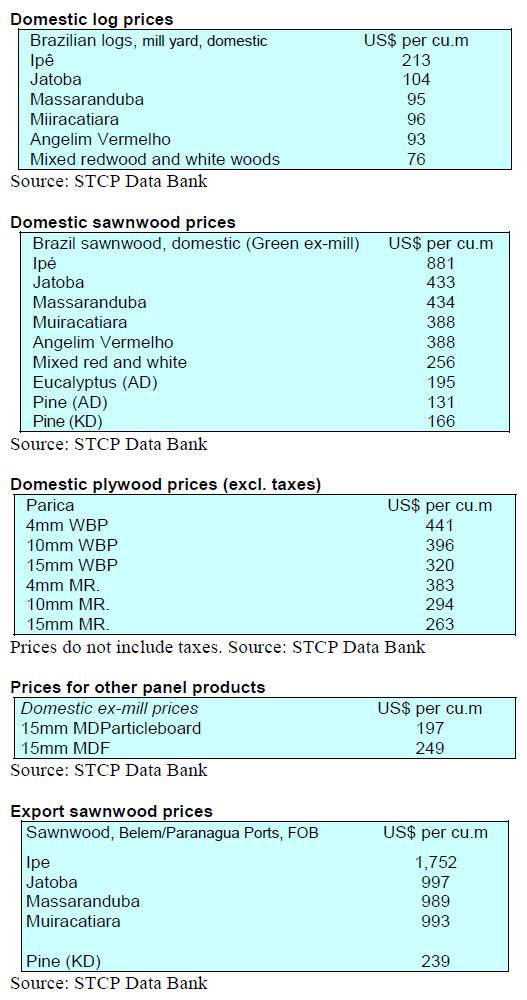
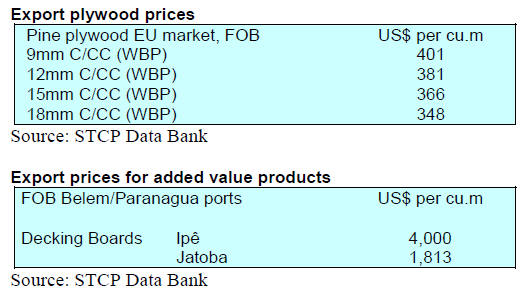
9. PERU
Corona update
The number of citizens in Peru infected with COVID-19
rose to 2,130,018 as of 11 August according to the
Ministry of Health. A total of 15,625,510 vaccine doses
have been administered and 6,532,449 people have
received two doses. The Deputy Minister of Health said
“if progress is made according to the vaccination schedule,
100 percent of the population would be protected before
the end of the year”.
The Council of Ministers agreed to extend the state of
health emergency due to the COVID-19 pandemic for 180
days.
See:
https://reliefweb.int/report/peru/bolet-n-semanal-redhumanitaria-nacional-rhn-5-de-agosto-de-2021-o-1-n-29
and
https://andina.pe/ingles/noticia-peru-coronavirus-cases-total-2130018-6532449-citizens-fully-vaccinated-857424.aspx
More funds to reactivate the forestry sector
The Ministry of Economy and Finance has authorised the
transfer of US$4.4 million to be used to reactivate and
finance activities aimed at strengthening the
competitiveness and sustainable use of forest resources
and wildlife in Ucayali, Loreto and Madre de Dios.
Details are found in Supreme Decree No. 186-2021-EF
published in the Official Gazette El Peruano. Ucayali will
be entitled to around US$1.3 million, a 23% increase on
the original budget. While the transfers to Madre de Dios
and Loreto are considerably higher.
The official gazette says the priority activities are related
to the granting of access rights to forest and wildlife
resources; prevention, control and surveillance of activities
that threaten forest resources and wild fauna; the
generation, administration and dissemination of forest and
wildlife information and community forest management.
The budget line for these disbursements is the
"Competitiveness and Sustainable Use of Forest Resources
and Wild Fauna”.
Better determination of contribution of forestry sector
to economy
As part of the implementation of the Forest Satellite
Account professionals from the National Forest and
Wildlife Service (SERFOR) and the National Institute of
Statistics and Informatics (INEI) recently exchange views
with experts from Costa Rica to learn about the experience
of creating environmental accounts.
This exposure was arranged thanks to a joint initiative of
Peru, Costa Rica and Germany and is part of the work to
develop the Forest Satellite Account, a key tool that will
allow to demonstrate the importance of the forest and
wildlife sector in the national economy.
It was reported that work is being done in Peru on the
construction of a nationwide map of vegetation cover
according to the standards established by the System of
Environmental and Economic Accounts - SCAE to
determine the stock, increase or reduction of the
vegetation cover of the country.
For a year, SERFOR and INEI have developed the
Peruvian Forest Satellite Account with the technical
support of professionals from the Central Bank of Costa
Rica, the Ministry of Environment and Energy and the
National Forest Financing Fund of the Republic of Costa
Rica.
